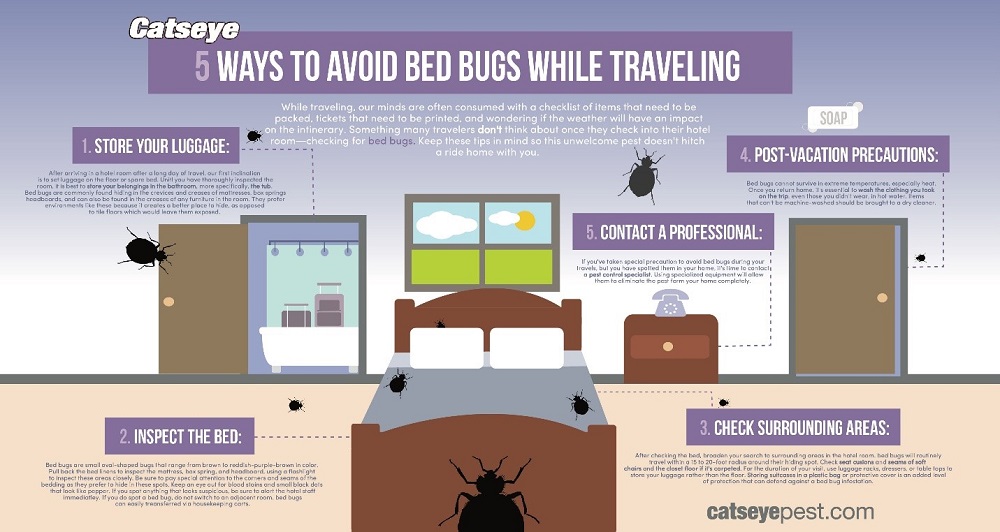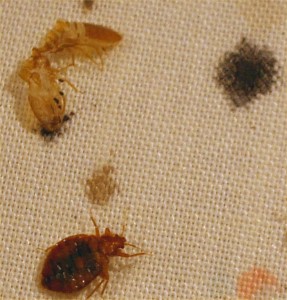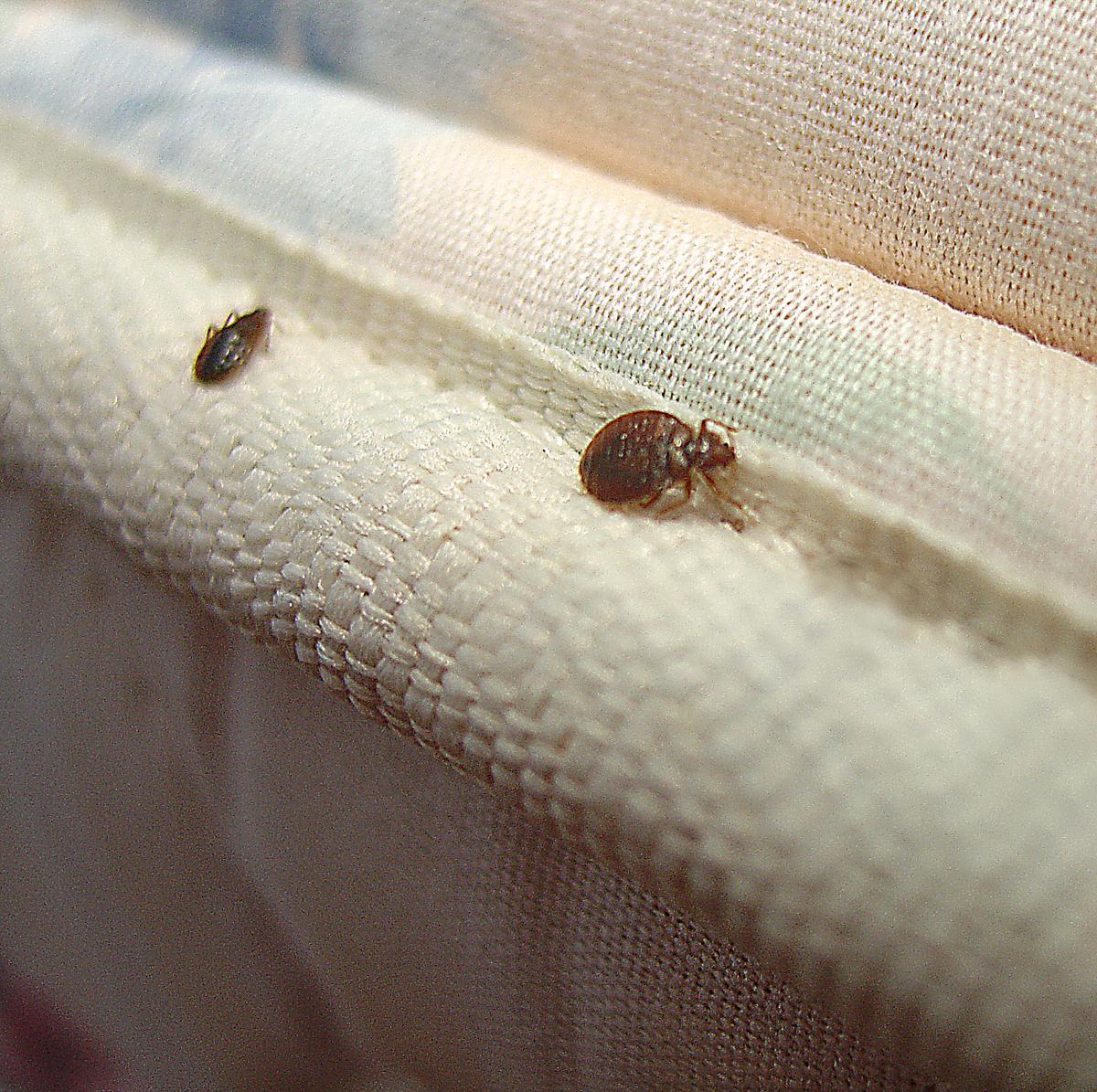To avoid bringing bed bugs when moving, thoroughly inspect all furniture, clothing, and personal belongings before packing. Moving to a new home can be an exciting experience, but the last thing you want to bring along with you are pesky bed bugs.
These tiny, blood-sucking pests can easily hitch a ride on your belongings and infest your new place. To prevent this, it’s crucial to take proactive steps to ensure that you don’t transport bed bugs during your move. By following a few simple precautions and being vigilant during the packing process, you can minimize the risk of bringing bed bugs with you to your new home.
We will discuss effective strategies to avoid bringing bed bugs when moving, providing you with peace of mind as you start this new chapter in your life.
Inspecting The New Place
Inspecting the New Place is crucial to prevent bed bug infestations when moving. By taking the time to thoroughly check the new premises, you can ensure a bed bug-free environment in your new home.
Examine The Furniture
Before moving any furniture into your new place, carefully inspect each piece for any signs of bed bugs. Look for small reddish-brown bugs, dark spots, or tiny eggs in the seams and crevices.
Check The Bedding
One of the common hiding spots for bed bugs is in the bedding. Check the mattress, box spring, and bed frame for any signs of infestation. Wash and dry all bedding items on high heat to kill any potential bed bugs.

Credit: www.terminix.com
Preparing Your Belongings
Ensure a bed bug-free move by taking precautions. Check your belongings thoroughly, including furniture and clothing, for any signs of bed bugs. Use sealed plastic bags for clothing and consider heat treatments for infested items. Research and hire professional movers experienced in bed bug prevention to minimize the risk.
Bag And Seal Items
Bagging and sealing your items in airtight containers is crucial to prevent bed bugs from hitching a ride during a move.
Clean And Dry Clothing
Clean and dry your clothing before packing to eliminate any potential bed bugs hiding in fabric.
Treating Potential Infestations
Learn how to prevent bed bug infestations when moving with these effective tips. By following these guidelines, you can avoid bringing unwanted pests into your new home and ensure a bug-free environment.
When moving to a new place, the last thing you want is to bring bed bugs along with your belongings. To ensure a pest-free move, it is essential to take proactive measures in treating potential infestations. By using effective methods such as heat treatment and insecticides, you can greatly reduce the risk of bed bugs infesting your new home.
Use Heat Treatment
To eliminate any bed bugs that might be hiding in your furniture or clothing, heat treatment is a highly effective solution. Bed bugs cannot survive in extreme temperatures, so subjecting your belongings to heat will effectively kill them. There are a few different ways you can implement heat treatment:
- Steam Cleaning: Using a steamer with high-temperature steam can kill bed bugs on contact. It is important to thoroughly steam all surfaces of your furniture, including seams and crevices.
- Dry Heat: If you have items that cannot be treated with steam, such as books or delicate fabrics, using dry heat is another viable option. Placing these items in a clothes dryer on the highest heat setting for at least 30 minutes will effectively kill any bed bugs.
- Professional Heat Treatment: If you suspect a severe infestation or simply want to ensure thorough eradication, hiring a professional bed bug heat treatment service is recommended. These professionals use specialized equipment to heat your entire home to temperatures that are lethal to bed bugs.
Apply Insecticides
In addition to heat treatment, applying insecticides can be an effective tool in treating potential infestations. However, it is crucial to follow the instructions and safety guidelines provided by the manufacturer. When applying insecticides:
- Choose the Right Product: Look for EPA-approved insecticides specifically designed to kill bed bugs. These products usually come in the form of liquid sprays, dusts, or aerosols.
- Target Infested Areas: Apply the insecticide to areas where bed bugs are likely to hide, such as cracks, crevices, and the edges of mattresses and furniture.
- Repeat Treatment: Bed bugs can be resilient, so it is important to repeat the insecticide application several times to ensure complete eradication.
- Consider Professional Help: If you are unsure about using insecticides on your own or dealing with a severe infestation, consulting a professional exterminator is a wise choice. They have the expertise to apply the right products and ensure effective treatment.
By employing a combination of heat treatment and insecticide application, you can significantly minimize the risk of bringing bed bugs along when you move. Taking these proactive measures will help you start fresh in your new home, free from these annoying pests.
Protecting Your Furniture
When moving to a new home, protecting your furniture from bed bugs is crucial to prevent infestations. Bed bugs can easily hide in cracks, crevices, and upholstery, making it essential to take proactive measures to avoid bringing them along when relocating.
Encase Mattresses
One effective way to safeguard your mattresses from bed bugs during a move is to encase them in protective covers. These encasements create a barrier that bed bugs cannot penetrate, preventing infestation and ensuring your mattress stays bed bug-free.
Use Bed Bug Covers
Another vital step in protecting your furniture is using bed bug covers for items such as sofas, chairs, and box springs. These specially designed covers zip tightly around the furniture, preventing bed bugs from entering or escaping, thereby reducing the risk of infestation.
Preventing Hitchhikers
Inspect Used Furniture
Before bringing any used furniture into your new home, ensure to inspect it thoroughly for any signs of bed bugs. Look for small, reddish-brown insects, tiny white eggs, or dark fecal spots. Pay close attention to the seams, crevices, and any cracks in the furniture where bed bugs may hide. If you discover any indication of bed bugs, avoid bringing the furniture into your new residence and consider professional bed bug extermination.
Avoid Sharing Clothes
When moving, refrain from sharing clothes with others, especially if they have had recent bed bug infestations or you suspect their belongings may harbor these pests. Opt for washing all your clothes immediately after the move, using hot water and high heat drying to eliminate any potential hitchhiking bed bugs. Additionally, keep your clothes in sealed plastic bags during the moving process to prevent any unforeseen bed bug infiltration.

Credit: www.catseyepest.com
Disposing Of Infested Items
To avoid bed bugs when moving, properly dispose of infested items like mattresses or furniture. Seal them in plastic before discarding to prevent further spread. Be vigilant during packing and inspect thoroughly to prevent infestation in new locations.
If you suspect that any of your items are infested with bed bugs, it’s crucial to handle them with extreme caution. Properly disposing of infested items is essential to prevent the spread of these elusive pests to your new home. Follow these steps to ensure you eliminate the risk of bringing bed bugs when moving.
Seal And Label
Before moving to disposal, seal and label the infested items. This step is crucial in containing the bed bugs and preventing them from infesting other areas. Use heavy-duty plastic bags to completely enclose the infested items. Ensure the bags are thick enough to prevent any punctures or tears during transportation. Once sealed, label the bags clearly with a warning sign indicating that the contents are infested with bed bugs.
Dispose Properly
When it comes to disposing of infested items, proper handling is key. It is crucial to prioritize the safety of others and to comply with local regulations. Dispose of the infested items in a way that prevents others from accidentally picking them up or getting exposed to bed bugs. Here are a few options to consider:
- Arrange a special pickup: Contact your waste management or sanitation department to inquire if they offer special pickups for infested items. This allows for proper disposal in a controlled manner.
- Take it to a landfill: If special pickups are not available, consider taking the sealed bags directly to a landfill. Call ahead to confirm that they accept infested items and inquire about any specific requirements for disposal.
- Hire a pest control professional: Another option is to consult a licensed pest control professional who can handle the disposal for you. They have the necessary knowledge and expertise to ensure proper disposal while minimizing the risk of spreading bed bugs further.
Remember: Never leave infested items by the curb for others to pick up, as this increases the risk of transferring bed bugs to unsuspecting individuals.
Hiring Professional Movers
Moving to a new place can be exciting, but it’s important to make sure you’re not unintentionally bringing unwanted guests like bed bugs with you. When hiring professional movers, there are few key steps you can take to reduce the risk of bed bug infestations.
Ask About Prevention Measures
Ensure the moving company you choose has clear prevention measures in place. Inquire if they have protocols for inspecting and treating trucks and equipment for bed bugs before and after each move.
Choose Certified Companies
Opt for certified moving companies as they are more likely to adhere to industry standards and regulations that help prevent the spread of bed bugs. Look for affiliations with organizations that promote quality assurance and best practices in the moving industry.
Post-move Cleaning
Prevent bed bugs from invading your new space during a move with thorough post-move cleaning. Inspect furniture, launder linens, and vacuum carpets to eliminate any hitchhiking pests. Stay vigilant to ensure a pest-free environment in your new home.
Inspect And Vacuum
Inspect every nook and cranny thoroughly after moving in. Use a flashlight to check behind furniture and in corners. Vacuum the entire house, focusing on baseboards, mattress seams, and upholstery. Dispose of the vacuum bag in a sealed plastic bag outside.Wash And Dry
Launder all clothing, bedding, and linens on high heat settings. Dry items on high heat for at least 30 minutes to kill any bed bugs. Clean curtains, rugs, and plush toys in the dryer as well. Steam clean carpets and furniture for extra precaution.
Credit: www.health.ny.gov
Frequently Asked Questions On How To Avoid Bringing Bed Bugs When Moving
How Can I Prevent Bed Bugs When Moving?
To prevent bringing bed bugs when moving, inspect all furniture, use protective covers, and vacuum thoroughly before packing.
Are There Specific Items That Attract Bed Bugs?
Bed bugs are attracted to fabric and wood, so be extra cautious with mattresses, upholstered furniture, and wooden items.
Can Bed Bugs Travel In Moving Boxes?
Yes, bed bugs can hide in cardboard boxes, so seal boxes with tape and consider using plastic containers for added protection.
Do Professional Movers Check For Bed Bugs?
Some professional moving companies offer bed bug detection services, but it’s essential to confirm this before hiring a moving company.
Conclusion
As you prepare for your move, it is crucial to be diligent in preventing the unwelcome hitchhikers known as bed bugs. By following the tips discussed in this blog post, you can minimize the risk of bringing these pests into your new home.
Remember to inspect your belongings, seal and treat items appropriately, and seek professional help if needed. By taking these precautions, you can ensure a bed bug-free transition and a peaceful start to your new chapter.
Related posts:

I’m MD Tanvir, and I bring years of expertise gained from working closely with pest control companies to the forefront. My journey in the industry has inspired me to launch Bug Battler, a platform aimed at equipping people with the know-how to combat pests autonomously. Through Bug Battler, I aim to empower individuals with practical insights to tackle pest infestations effectively.

